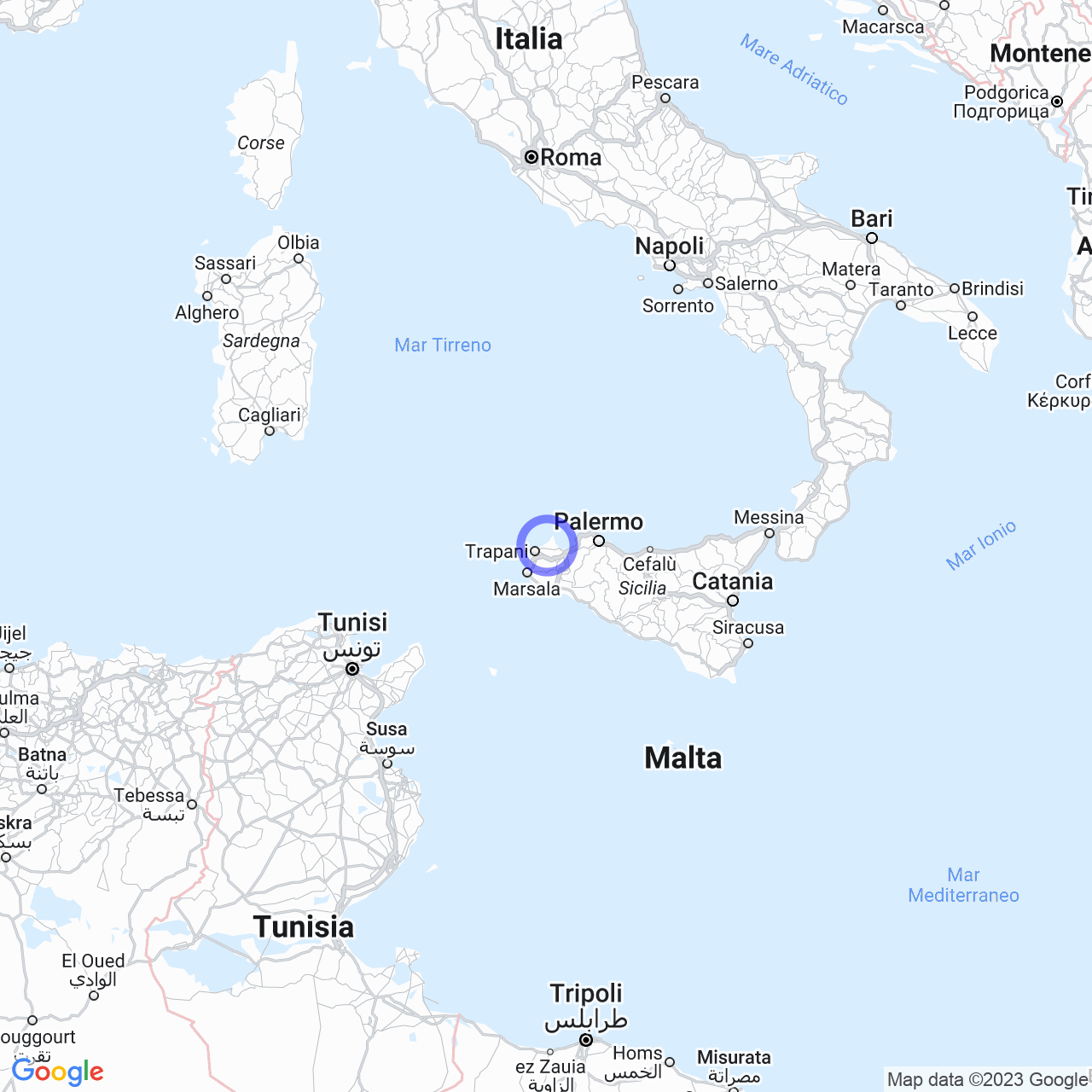Custonaci
Let's discover Custonaci together
Hello friends! Today I want to take you on a journey to explore the beautiful Sicilian city of Custonaci. With just over 5000 inhabitants, Custonaci is known as the "international city of marbles" due to the presence of the famous Perlato di Sicilia. But let's take it one step at a time, and I will reveal all of its secrets!
Physical geography
Custonaci is located on a hill about 186 meters above sea level, at the eastern end of the Bonagia Gulf. It borders the municipalities of San Vito Lo Capo, Valderice, Buseto Palizzolo and Castellammare del Golfo, and is kissed by the waters of the Tyrrhenian Sea. The seaside village of Cornino offers breathtaking views of these crystal-clear waters. Within the Custonaci territory, there are several hamlets that characterize the city: 'Sperone', 'Assieni', 'Santa Lucia' - 'Piano Alastre', 'Purgatorio', 'Baglio Messina', 'Baglio Mogli Belle' and 'Scurati'.

History
The history of Custonaci dates back to the Swabian era when King Frederick II donated various territories to the University of Monte San Giuliano (now Erice) with the aim of bringing together the "habitatores" for the population's growth. The territory was divided into fiefdoms and given to the wealthiest families of Erice to administrate it. As the various settlements grew, they were formed around the sanctuaries or the "bagli", structures that coordinated work in the fields. With the arrival of Perlato di Sicilia production, Custonaci began to become more autonomous, becoming an autonomous municipality in 1948, and is now known as the 'International Marble City'.
Monuments and places of interest
Custonaci is a city rich in monuments and places of interest. The first one I would recommend visiting is the Sanctuary of Maria Santissima di Custonaci, built around 1500. Around this building, small settlements of farmers were concentrated, giving birth to the city. The sanctuary is enriched by a beautiful rose window on the facade and houses a 15th-century painting depicting the Virgin about to breastfeed the baby. Another must-see is the Grotte di Scurati, an ancient prehistoric settlement where the Custonaci Living Nativity Scene takes place during the Christmas period. If you are passionate about history, visit Baglio Cofano, an ancient structure dating back to the 17th century that was abandoned at the end of World War II.
Perlato di Sicilia
As I mentioned at the beginning, Custonaci is a city famous for Perlato di Sicilia. This precious stone is found in about 100 quarries in the territory and is processed by around fifty industrial workshops. If you want to learn more about this process, visit the city's Marble Museum, where you can admire valuable marble artifacts and see sculptors at work up close.
Events
Custonaci never lacks opportunities to celebrate. August is the hottest month, not only meteorologically but also for the events that take place. During the second week, the Festa del Mare takes place, a celebration that honors the city's connection to the sea. The third week of August is dedicated to the Festa di Maria Santissima di Custonaci, featuring some of the oldest religious traditions in the area. In December, the Custonaci Living Nativity Scene takes place, an unforgettable experience for both adults and children.
Custonaci is a city that conquers the hearts of its visitors with its natural beauties, its millennia-old history, and its traditions that make visitors feel like an integral part of the community. I hope I have made you want to visit as much as I do. See you soon, friends!
